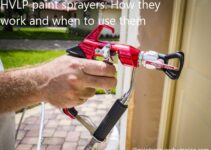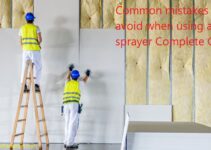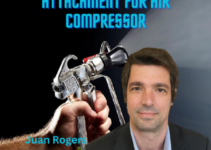Looking to tackle a painting project with an edge? You need to know about handheld paint sprayers. They can simplify the job and speed up the process while achieving a professional finish.
From understanding how they work, to learning the best ways to use them – this guide has you covered. Let’s explore the benefits of using a handheld paint sprayer!
This guide will provide an in-depth look at the technology behind handheld paint sprayers and the different types available. We will explore the benefits of handheld sprayers, what sorts of materials can be sprayed with them and when each type should be used. By the end of this guide, you will have a thorough understanding of what makes these tools great for so many different tasks.
We’ll start off by looking at some basic information on handheld paint sprayers to give you a better idea of how they work and why they’re so popular. Then we’ll move on to discussing the different types available, what kinds of materials they can be used with, and when each type is best suited for certain painting tasks. Finally, we will go over some tips to help you get the most out of your handheld paint sprayer.
Definition of handheld paint sprayers
Handheld paint sprayers are small, portable tools designed for spraying paints, sealants and enamels in a wide range of applications. These sprayers work by either pressurizing material with an air compressor or using powered motors to propel the material out of a nozzle in a fine mist. Such sprayers can be used on hard surfaces like walls and trim, but they are also ideal for coating furniture, crafts and other items with intricate designs.
The primary benefit of using a handheld paint sprayer is the speed at which it applies an even coat to your desired surface, making them popular among homeowners and professionals alike. Furthermore, many types of handheld paint sprayers come equipped with features such as adjustable flow rates and extra nozzles to make cleanup easier.
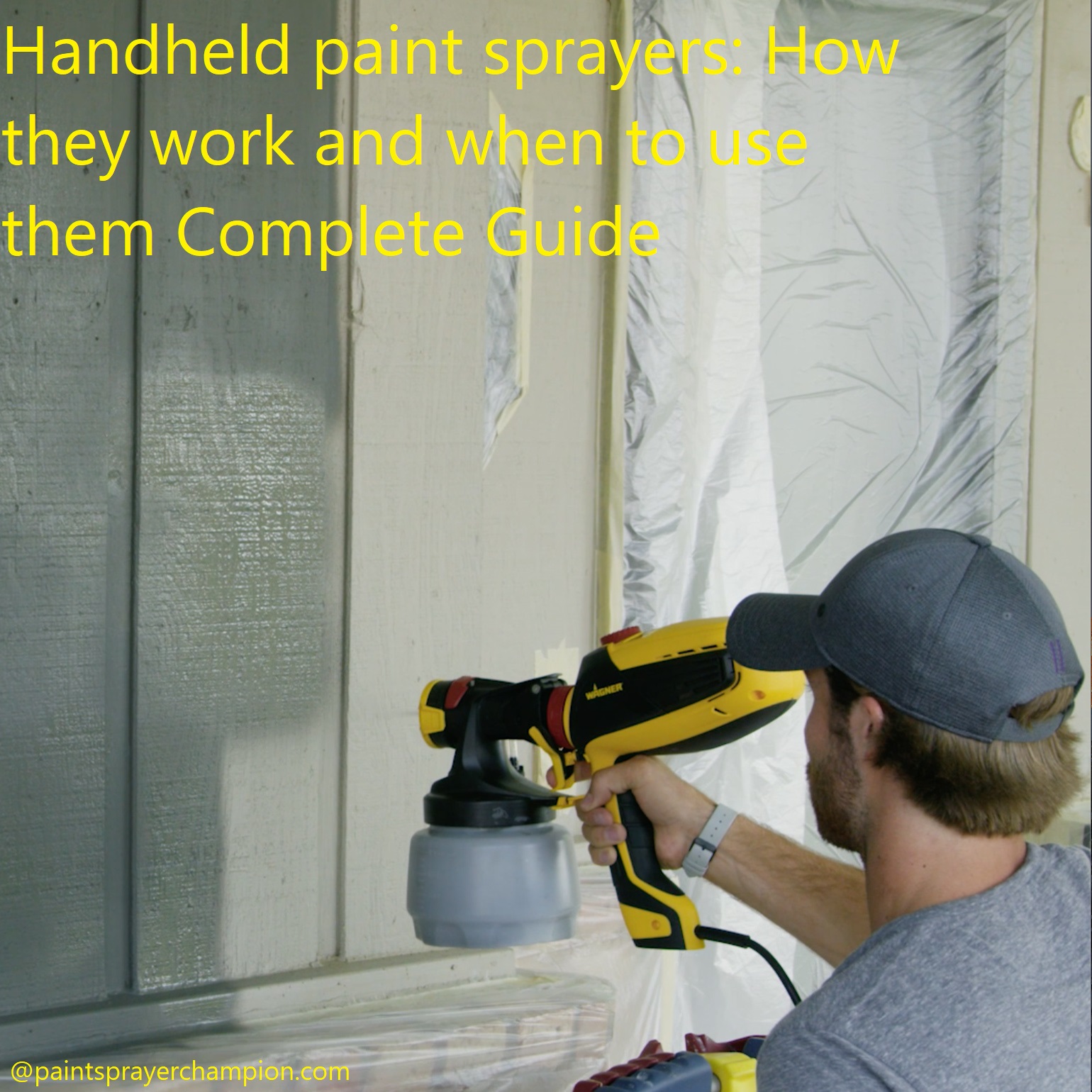
Brief overview of the benefits of using handheld paint sprayers
Handheld paint sprayers are an ideal tool for residential and commercial painting jobs. Compared to traditional brush and roller painting methods, handheld paint sprayers provide a number of advantages. The following is a brief overview of some of the benefits associated with using handheld paint sprayers for home improvement and professional painting projects:
- Faster Job Completion – Paint sprayers allow painters to finish jobs much more quickly than traditional methods by spraying the material on large surfaces efficiently and effectively. This makes it easier to complete paint jobs in record time; perfect for both residential and commercial projects where time constraints can be an issue.
- Higher Quality Finish – Handheld paint sprayers offer superior coverage when compared to other types of painting tools — allowing you to achieve better results with less effort! The high-pressure output results in a thin, uniform coat that will look better than any brush or roller could provide. Plus, the even spread allows you to get smoother finishes with fewer touchups needed afterward.
- Greater Reach – Handheld paint sprayers were designed for ease-of-use and portability — making them perfect for tackling larger sized jobs without having to worry about the weight of transporting materials from one spot to another location on the job site. Additionally, these units offer ample reach; meaning you don’t have to worry about constantly moving around ladders or scaffolding in order get into tight spaces that may otherwise be difficult reach with traditional painting methods.
4 . Cost Efficiency – Finally, handheld paint sprayers make completing painting projects more cost effective through their ability for fast application and potentially lower material costs due their higher accuracy when it comes to material consumption — eliminating unwanted overspray or waste!
Purpose of the guide
This guide is designed to provide an easy-to-follow overview of handheld paint sprayers, how they work, and the best uses for them. All the information you need to understand what these products offer and when it’s appropriate to make use of them is detailed here.
Paint sprayers have come a long way in recent years, and this guide will provide an in-depth look at the development of handheld devices so that you can make an educated decision on whether one may be the right tool for your home improvement project.
How handheld paint sprayers work
Most handheld paint sprayers require a minimum of three main components to produce an atomized spray — an electric or gas-powered motor, a pump and an air and paint supply. The electric or gas motor generates the power that drives the pump, and the pump compresses air generated by the motor to form pressurized air. This pressurized air acts as the engine that propels the atomized paint particles through a gun-style nozzle.
When it comes to operating handheld paint sprayers, it is important to first understand how they function and their capabilities. To get started, connect your paint sprayer’s suction tube into a can of primer, enamel or stain and turn on the power button — often located on top of the body — until you hear it running continuously. This turns on both your pump and electric or gas-powered motor. From there, you may need to adjust your pressure knob in order for your paint particles to be evenly dispersed at different speeds. Different power levels are better suited for various jobs, including interior walls versus exterior walls and cabinets versus furniture pieces.
Lastly, practice spraying a scrap piece of wood before beginning your painting project in order to get a feel for your specific device.
Explanation of the mechanism behind handheld paint sprayers
Handheld paint sprayers are the perfect solution for all your DIY projects that require uniform coating. They produce a much finer finish than using a brush or roller, require less time and labor, and offer convenience and portability.
At its core, a handheld paint sprayer works by forcing a low-pressure air stream through an outlet nozzle that atomizes the paint into microscopic particles. This air stream mixes with the paint before exiting the nozzle in a fine mist, creating an even and consistent finish on the target surface. The speed at which the sprayer travels over the surface affects both coverage and distribution of desired materials. The user should choose the right nozzle size depending on what they are trying to achieve as well as any specific application requirements. You can find various types of nozzles available, including narrow fan-shaped sprays, wide fan sprays, pinpoint sprays or simply adjustable nozzles able to produce any desired shape or width of spread required in each project.
To provide more control over appearance for users, many modern handheld paint sprayers include additional features such as adjustable pressure settings and speed controls that allow users to slow down or speed up their spraying tasks by simply adjusting these settings from their control panel. Additionally, some models even come equipped with high quality integrated filters designed to reduce overspray and minimize waste associated with traditional painting methods such as brushing or rolling. This not only helps with efficiency but also improves your end results so you can always be sure you’re getting top quality performance out of your wearable paint spayer every time you use it!
The components of handheld paint sprayers
Handheld paint sprayers consist of several important components which, when combined, produce a fine mist of paint or coating. The components vary slightly, depending on the type of sprayer you are using – whether it is a HVLP (high-volume, low-pressure) or AIR (airless) type.
HVLP paint sprayers: The HVLP paint sprayer is composed of a few major parts including the air compressor/pump unit, air intake filter, adjustable pressure regulator, nozzle and gun assembly. The air compressor/pump unit provides the power to make the particle size small enough to produce an even mist and uniform coverage when applied to the surface. An adjustable pressure regulator allows you to alter the pressure levels from 0-150 psi. This determines how much material will be sprayed out per second and helps to ensure optimal atomization for better coverage with less waste. The nozzle and gun assembly provide a consistent distribution of material onto the surface by controlling how much atomizes for each pull on the trigger.
AIR Paint Sprayers: The AIR sprayer uses compressed air supplied from an external source such as an air compressor or tank. It is also composed of several key components including a hose that connects from the compressed air source to feed into its manifold system; adjustable pressure regulator; nozzle and gun assembly; and cup or tank system where liquid is stored before spraying onto your desired object or surface. The adjustable pressure regulator allows you to control how much atomization occurs with each pull on the trigger while providing maximum control over material application rates. The cup or tank system stores enough product for a straightforward application of one area at a time without needing refillings in between coats.
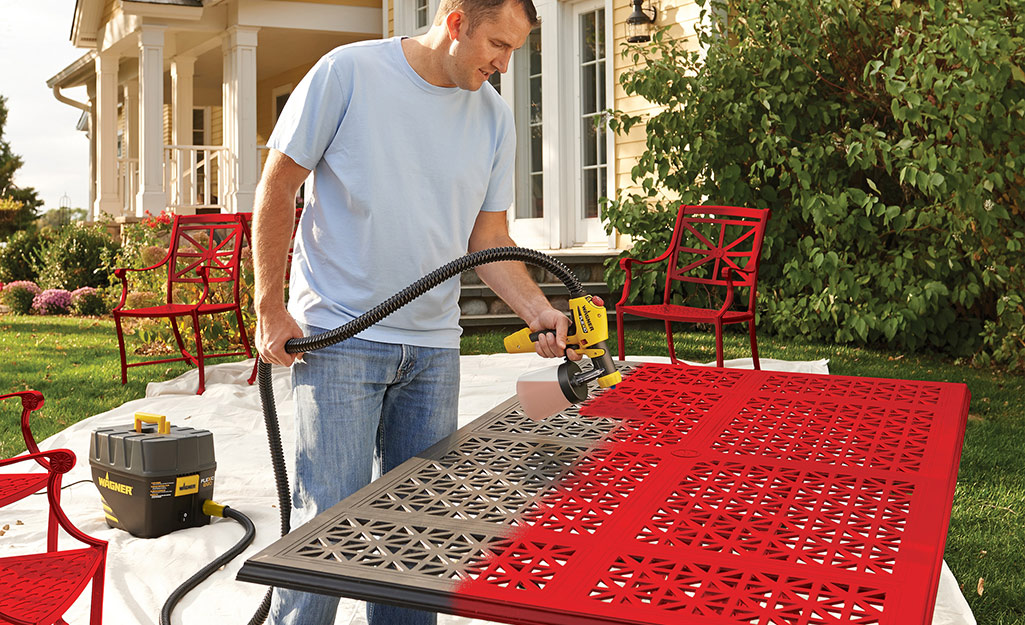
The types of handheld paint sprayers
There are many types of handheld paint sprayers available in the market, so it really comes down to the application and your preference for power and control. The main three types of handheld paint sprayers are Airless, Gravity Feed, and Pressure Feed.
Airless: As the name suggests, airless paint sprayers do not require an air compressor as a source of pressurization; instead they use a pump to atomize coatings. These sprayers offer good quality finishes, but can be very noisy. Since there is no air movement within the paint chamber, particles of coatings can build up over time as opposed to gravity fed or pressure feed methods where there is some movement which helps keep the supply fresh.
Gravity Feed: Gravity feed handhelds operate on gravity alone – no compressed air is required – it’s simply a matter of which way the nozzle or container is pointed at the wall surface or object being painted. This type offers more control when working with smaller applications especially due to their lack of over-spray that you might get with an airless unit.
Pressure Feed: Pressure feed units are very similar to gravity feed units but they do require an external compressor because they need pressurized air or gas as part of their operation method in order to achieve very fine atomization. This makes them great for smaller projects such as furniture and trim work because it provides even more accuracy than gravity fed models do by allowing for further precision and control over coverage areas.
When to use handheld paint sprayers
Handheld paint sprayers are the preferred choice for small, intricate jobs or for those who are dealing with difficult or irregularly shaped surfaces. Unlike airless sprayers that tend to produce a considerable amount of overspray, handheld paint sprayers minimize waste. This is ideal when completing detailed touch-ups or painting sections of furniture that must be moved from room to room – something you wouldn’t be able to do with an airless sprayer.
Painting a door, trim and window frames in a single room can also benefit from the use of handheld paint sprayers. With an airless sprayer, it would be possible to complete the job in a single session but it would involve masking off other sections of the room as well as taking precautions against splatter and overspray. With a handheld paint sprayer, simply move the unit around the various sections and you’ll be done in no time.
Whether you’re giving your home a facelift or painting antique furniture, increasing your efficiency is always important. Being able to rely upon the maneuverability and even coatings of a handheld paintsprayer makes quick work of most painting projects. For larger jobs (such as exterior walls) or frequent projects consider investing in an airless paint sprayer for increased productivity but keep your handheld unit close at hand for smaller tasks such as furniture repair or finishing walls between coats of primer and/or sealant.
Suitable surfaces for handheld paint sprayers
Before using a handheld paint sprayer, it’s important to first consider the type of surface the tool will be used on. Many surfaces are suitable for spraying with a handheld unit, but some require special care or additional considerations before and during use.
The most common surfaces that can be painted with a handheld paint sprayer include wood, brick, metal, stucco, and plastic. Each surface requires specific preparation before being sprayed with paint and there are a few special considerations to keep in mind when painting each one.
Wood: When spraying wood surfaces such as siding or fences it’s important to make sure the wood is prepped properly beforehand by sanding and cleaning off debris. The wood should also be sealed prior to painting to ensure even coverage of the paint and minimal dripping or overspray.
Brick: Brick should also be cleaned beforehand and sealed prior to painting. Acrylic latex paints are often used for a masonry project like this one as it will withstand outdoor conditions better than oil-based paints will. Make sure that you apply adhesion primer first to ensure proper coverage of your paint color once applied.
Metal: Metals such as aluminum siding should always be prepped before using a handheld paint sprayer by wiping them down with mineral spirits or soap and water then rinsing with clear water and allowing them to dry fully before adding primer or the chosen color of paint coating. It’s also important to make sure that you select an appropriate paint type, such as epoxy-fortified enamel which works best on metals like aluminum siding because they hold up well against outdoor conditions due to their tough finish.
Stucco: Stucco can be quite tricky since it is highly absorbent in nature so careful preparation is key when spraying stucco with a handheld unit since if too much moisture accumulates the end result could coat unevenly or not evenly at all resulting in an uneven finish overall if caution isn’t taken ahead of time prior to application process beginning. Special stucco primers should always be used on this topography along with direct coating afterward for full accuracy in coverage across entirety of application area desired for work potentializing project outcome potential capabilities!
Plastic: Plastic surfaces need special care when being sprayed using a handheld unit due to their sensitivity from any amount of heat from the device itself which could cause warping upon contact if done without proper care during usage!. Preparation techniques needed for plastics involve cleaning them thoroughly using only soap water then drying fully afterward plus applying an appropriate primer coat followed by finish coating(s).
Projects that are best suited for handheld paint sprayers
Handheld paint sprayers offer professionals and DIYers alike a great deal of versatility in their projects, allowing you to apply most kinds of thin to medium viscosity paint or varnish such as latex paint, enamel, oil-based paints, stains and even lacquers when used with special thinners.
Due to the design of a handheld unit and its fine atomizing nozzle, these types of sprayers can provide cushioned and very precise coats when compared to traditional brush painting. Small items such as dressers, chests of drawers or tables can be sprayed very quickly with a handheld paint sprayer – it is a great choice for hard-to-reach areas as well. It is well worth investing in a good quality handheld unit that is adjustable so you can control your expected paint output rate according to the project at hand.
In general, most small-scale projects are suited for use with an HVLP (High Volume Low Pressure) handheld painter such as furniture refinishing, touch up jobs or completing trim work where precision is more important than further coverage. Some common household objects that might be improved by using a handheld sprayer include laminate countertops and cabinets, shelves and bookcases – anywhere where one thin coat will do the job better than multiple brush coats will. For larger scale projects consider looking at airless units which can often achieve greater volume output.
Tips for using handheld paint sprayers
Using a self-contained handheld paint sprayer can make a big job a little easier. When used correctly and with the right safety precaution, this powered painterless tool can help you rapidly coat large surfaces and difficult to paint areas. Below are some tips for using your handheld paint sprayer to ensure the highest quality finish.
First, before painting anything, you should always test spray your paint on scrap material or old cardboard to check the coverage and general pattern of the sprayer. This will give give you an idea of how fast your brush is spraying and how “wet” it is compared to other similar products.
Second, when spraying something more complicated than a straight wall or ceiling, it’s important to practice with your sprayer on simple objects before attempting something more detailed. Start out by practicing on small areas such as corners and irregular shapes that may require additional passes while continuing to move in one consistent direction then work up until you gain confidence in using the equipment and controlling the amount of paint being released from the nozzle.
Third, it’s always best to thin or dilute any heavier materials like latex paints for use in these smaller model handheld machines because thicker materials have a greater tendency to clog up small nozzles or pipes that transfer liquid between tanks; however if using thinner oils or mild solvents be careful not to over thin them because having excessively thin material sprayed onto objects could lead potentially leave streaks or uneven coverage after drying time has elapsed. Make sure all of these liquids are appropriately mixed well prior beginning any painting task with them as well as regularly cleaning any accumulated residue/clogs after use so they don’t detrimentally impact future painting jobs.
Finally remember safety first! Be sure wear protective goggles/masking while painting in poorly ventilated areas and only fill up half-way when filling tanks in order avoid potential spills due to mishandling when transporting paints from one workspace another.
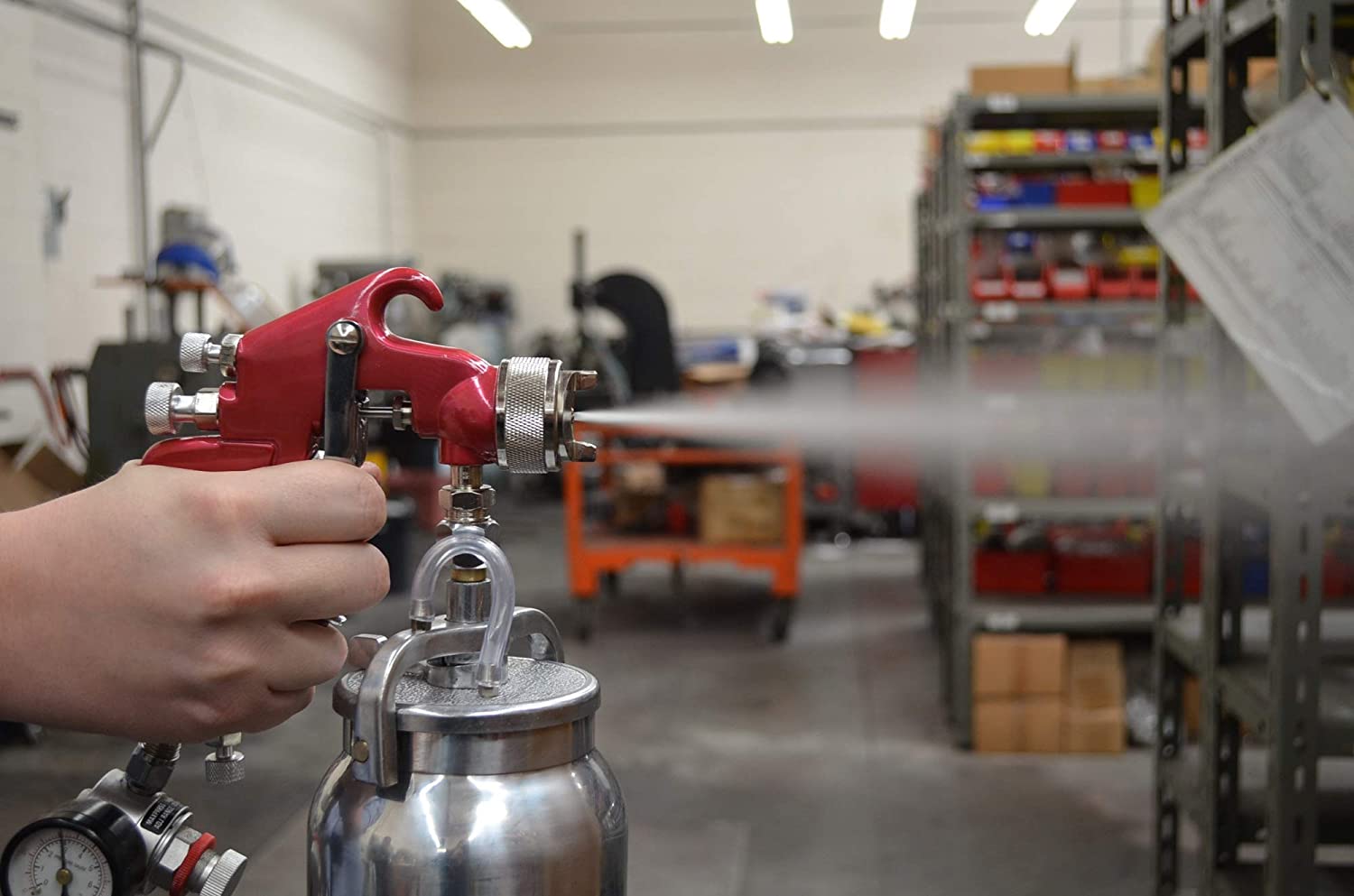
Conclusion
In conclusion, handheld paint sprayers are an effective tool for a wide array of painting and staining jobs. They provide excellent coverage and come in a variety of sizes to fit your specific need. In general, these tools can be used for interior and exterior painting as well as staining projects and are great for a variety of materials such as walls, furniture, trim, cabinet faces, decks and fences.
When using handheld paint sprayers it is important to take the necessary safety precautions including wearing protective eyewear, respirators or other protective clothing. Additionally it is best to practice in an area free from debris before attempting any larger scale projects. Selecting the right nozzle size combined with proper technique will ensure you get the best possible results on your projects.
FAQ’S
How does a handheld paint sprayer work?
A handheld paint sprayer works by using a motorized compressor to create high pressure that forces paint through a nozzle and onto a surface.
When should you use a paint sprayer?
You should use a paint sprayer when you need to cover a large area quickly or when you want a smooth and even finish on your paint job.
What are paint sprayers and how do they work?
Paint sprayers are tools that use high pressure to atomize paint into a fine mist that is then sprayed onto a surface. They work by using a motorized compressor to create this pressure and force the paint through a nozzle.
How do you use a handheld spray gun?
To use a handheld spray gun, you first need to fill the paint container with your desired paint. Then, adjust the nozzle to your desired spray pattern and pressure, and begin spraying the paint onto your surface in a back-and-forth motion.
When and how to use a sprayer?
A sprayer should be used when you need to cover a large surface area quickly or when you want a smooth and even finish on your paint job. To use a sprayer, you need to first fill the container with paint, adjust the nozzle, and then spray the paint onto the surface in a back-and-forth motion.
What is the advantage of hand sprayer?
The advantage of a hand sprayer is that it is portable and easy to maneuver, making it ideal for smaller projects or hard-to-reach areas. It also allows for a more controlled application of paint.
What are the functions of paint sprayer?
The functions of a paint sprayer include atomizing the paint, regulating the spray pattern and pressure, and controlling the amount of paint that is released onto the surface.
What are five functions of a sprayer?
The five functions of a sprayer include atomizing the paint, regulating the spray pattern, controlling the spray pressure, controlling the amount of paint released, and adjusting the viscosity of the paint.
What are the main functions of sprayer?
The main functions of a sprayer are to atomize the paint into a fine mist, regulate the spray pattern and pressure, and control the amount of paint that is released onto the surface.
How do you use a paint sprayer?
To use a paint sprayer, you need to first fill the container with paint, adjust the nozzle and pressure to your desired settings, and then spray the paint onto the surface in a back-and-forth motion.
See Also:
- Best hvlp paint sprayer
- Best paint sprayer for cabinets
- Best cordless paint sprayer
- Best paint sprayer attachment for air compressor
- Best airless paint sprayer
